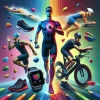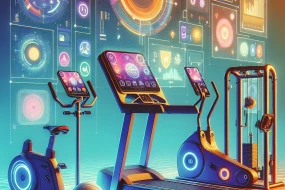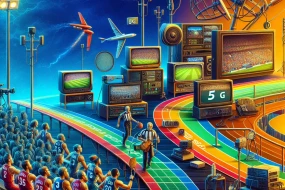
Preparing for a triathlon is no small feat. It demands rigorous training, discipline, and a strategic approach to improve performance across swimming, cycling, and running. In today's digital age, technology has emerged as a formidable ally for athletes, offering tools and insights that can transform your training routine. Whether you're a seasoned triathlete or a beginner, leveraging tech can provide you with a competitive edge. In this article, we'll explore practical tips and tricks to harness technology effectively and prepare for your next triathlon.
Embrace Wearable Technology
Wearable technology has revolutionized the way athletes train and monitor their performance. Devices like smartwatches and fitness trackers provide real-time data on metrics such as heart rate, distance, speed, and calories burned. These tools can help tailor your training sessions to optimize results. For instance, using a heart rate monitor can ensure you’re working within the right intensity zones, crucial for building endurance without overtraining. However, it's essential to choose a device that suits your specific needs—some focus more on swimming metrics, while others excel in tracking cycling or running data.
Utilize Training Apps
Training apps are like having a personal coach in your pocket. Apps such as Strava, TrainingPeaks, and MyFitnessPal offer comprehensive training plans, track your progress, and provide insights based on your performance. These platforms often include community features, allowing you to connect with other athletes, share tips, and even compete in virtual challenges. However, be cautious of over-relying on apps. While they provide valuable guidance, it's crucial to listen to your body and adjust your training regimen accordingly.
Leverage Online Coaching and Virtual Reality
Online coaching platforms have made professional guidance more accessible than ever. Websites like Zwift and TrainerRoad offer virtual training environments, where you can simulate race conditions and receive feedback from seasoned coaches. Virtual reality can enhance your cycling and running sessions by immersing you in realistic race scenarios, improving mental preparedness. An important tip is to combine online coaching with in-person sessions occasionally, as face-to-face interactions can provide nuanced feedback that tech alone might miss.
Analyze Data for Performance Improvement
Data analysis is a powerful tool in optimizing triathlon performance. Platforms like Garmin Connect and Polar Flow allow you to dive deep into your training data, identifying patterns and areas for improvement. For example, analyzing your swim stroke metrics can highlight inefficiencies, enabling targeted improvements. A common mistake is to get bogged down by too much data—focus on a few key metrics that align with your goals and track them consistently.
Incorporate Nutrition Tracking
Nutrition is a cornerstone of triathlon training, and technology can help you manage it effectively. Apps like MyFitnessPal and Cronometer allow you to log your food intake, track macronutrients, and ensure you're fueling your body adequately. Proper nutrition tracking can prevent undernutrition or overconsumption, both of which can hinder performance. Remember, while apps provide general guidelines, consulting with a sports nutritionist can offer personalized advice tailored to your needs.
Use Recovery Tools
Recovery is as important as training, and technology offers several tools to aid this process. Devices like foam rollers with vibration technology and smart recovery boots can enhance muscle recovery, reduce soreness, and prevent injuries. Apps like Calm or Headspace can help with mental recovery, promoting relaxation and stress management. It's vital to integrate these tools into your routine without replacing traditional recovery methods like stretching and rest.
Set Realistic Goals with Tech
Goal setting is crucial in triathlon preparation, and technology can assist in making these goals measurable and achievable. Apps and devices allow you to set specific, time-bound targets and track your progress towards them. For instance, if your goal is to improve your cycling speed, you can use GPS-enabled devices to monitor your pace over time. However, setting overly ambitious goals can lead to burnout, so ensure your targets are realistic and adjust them as needed based on your progress.
Stay Connected with the Triathlon Community
Connecting with other triathletes can provide motivation, support, and valuable insights. Social media platforms and online forums are excellent places to share experiences, ask questions, and learn from seasoned athletes. Platforms like Reddit or Facebook groups dedicated to triathlons can be great resources. Be mindful of misinformation—always cross-reference advice with reputable sources or professionals.
Plan Your Race Day with Tech
Tech can help you meticulously plan your race day logistics, from travel arrangements to gear checklists. Apps like Race Day Checklist can ensure you don’t forget essential items. Weather apps can provide up-to-date forecasts, helping you prepare for race day conditions. It's crucial to have a backup plan for tech failures—always have a physical copy of your checklist and race day plan.
Avoid Common Tech Pitfalls
While technology offers numerous benefits, it’s not without pitfalls. Over-reliance on gadgets can lead to neglecting fundamental training principles. Tech should complement, not replace, traditional training methods. Another common mistake is neglecting device maintenance—ensure your gadgets are charged and updated to avoid mid-training disruptions. Lastly, remember to balance your screen time with outdoor training to maintain a connection with real-world conditions.






























